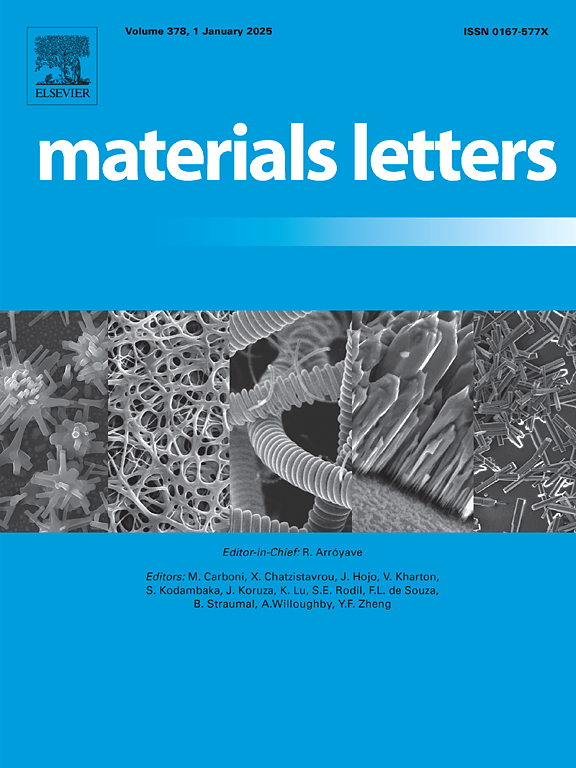抑制牙种植体细菌生长的聚(乙烯基苄氯-co-3-(甲基丙烯酰氧基)丙基)三甲氧基硅烷的合成与季铵化
IF 2.7
4区 材料科学
Q3 MATERIALS SCIENCE, MULTIDISCIPLINARY
引用次数: 0
摘要
种植牙被广泛用于治疗牙齿脱落,但由于它们的表面暴露于口腔环境,它们很容易受到微生物的定植。为了解决这个问题,最近的努力集中在具有抗菌特性的工程植入物表面。本研究以不同烷基链长度的乙烯基氯化苄(VBC)和[3-(甲基丙烯氧基)丙基]三甲氧基硅烷(MPS)为共聚物,进行季铵盐化,合成了一种抗菌涂层。采用自由基聚合法制备了MPS-VBC共聚物,并经季铵化反应生成了不同链长(n)的铵盐:三甲胺(n = 1)、三乙胺(n = 2)和n, n -二甲基辛基胺(n = 8)。采用1H NMR和FTIR对季铵化铵盐进行了表征。采用不同浓度对不同链长的QAS对革兰氏阳性菌和革兰氏阴性菌的抑菌效果进行了研究。链长为n = 8的QAS对大肠杆菌和无乳链球菌的抑制率达到99.9999%,对金黄色葡萄球菌的抑制率达到99.99%。相比之下,较短链长的QAS (n = 1,2)对细菌细胞没有减少作用。最小抑菌浓度(MIC)均小于10 mg/mL。采用谷胱甘肽s -转移酶(GST)活性对合成的QAS进行毒性评价。在MIC和MBC浓度下,QAS无细胞毒性。本研究开辟了在牙科和口腔途径中使用QAS的途径,因为它们在口服时被证明是无毒的。本文章由计算机程序翻译,如有差异,请以英文原文为准。
![Synthesis and quaternization of poly(vinyl benzyl chloride-co-3-(methacryloyloxy)propyl] trimethoxy silane) for inhibiting bacterial growth on dental implants](https://img.booksci.cn/booksciimg/2025-10/108322597121793544450.jpg)
Synthesis and quaternization of poly(vinyl benzyl chloride-co-3-(methacryloyloxy)propyl] trimethoxy silane) for inhibiting bacterial growth on dental implants
Dental implants are widely used to treat tooth loss, but because their surface is exposed to the oral environment, they are vulnerable to microbial colonization. To combat this, recent efforts have focused on engineering implant surfaces with antimicrobial properties. This work involved the synthesis of an antimicrobial coating by quaternizing the copolymer of vinylbenzyl chloride (VBC) and [3-(Methacryloyloxy)propyl]trimethoxy silane (MPS) of varying alkyl chain lengths. The MPS-VBC copolymer was synthesized using free radical polymerization, and quaternized to form ammonium salts of varying chain length (n): Trimethylamine (n = 1), Triethylamine (n = 2) and N,N -Dimethyl octylamine (n = 8). The quaternized ammonium salts (QAS) were characterized using 1H NMR and FTIR spectroscopies. The antimicrobial effects of the QAS having different chain lengths were tested against both grampositive and gram-negative bacteria using different concentrations. The QAS with a chain length of n = 8 achieved a 99.9999 % reduction in E. coli and S. agalactiae, and a 99.99 % reduction in S. aureus. In contrast, QAS with shorter chain lengths (n = 1,2) showed no reduction in bacterial cells. The minimum inhibitory concentration (MIC) was found to be less than 10 mg/mL for all strains used in this study. The toxicity of our synthesized QAS was evaluated using Glutathione S-transferase (GST) activity. The QAS showed no cytotoxicity at MIC and MBC concentrations. This study opens pathways for using QAS in dental and oral pathways as they proved to be non-toxic when used orally.
求助全文
通过发布文献求助,成功后即可免费获取论文全文。
去求助
来源期刊

Materials Letters
工程技术-材料科学:综合
CiteScore
5.60
自引率
3.30%
发文量
1948
审稿时长
50 days
期刊介绍:
Materials Letters has an open access mirror journal Materials Letters: X, sharing the same aims and scope, editorial team, submission system and rigorous peer review.
Materials Letters is dedicated to publishing novel, cutting edge reports of broad interest to the materials community. The journal provides a forum for materials scientists and engineers, physicists, and chemists to rapidly communicate on the most important topics in the field of materials.
Contributions include, but are not limited to, a variety of topics such as:
• Materials - Metals and alloys, amorphous solids, ceramics, composites, polymers, semiconductors
• Applications - Structural, opto-electronic, magnetic, medical, MEMS, sensors, smart
• Characterization - Analytical, microscopy, scanning probes, nanoscopic, optical, electrical, magnetic, acoustic, spectroscopic, diffraction
• Novel Materials - Micro and nanostructures (nanowires, nanotubes, nanoparticles), nanocomposites, thin films, superlattices, quantum dots.
• Processing - Crystal growth, thin film processing, sol-gel processing, mechanical processing, assembly, nanocrystalline processing.
• Properties - Mechanical, magnetic, optical, electrical, ferroelectric, thermal, interfacial, transport, thermodynamic
• Synthesis - Quenching, solid state, solidification, solution synthesis, vapor deposition, high pressure, explosive
 求助内容:
求助内容: 应助结果提醒方式:
应助结果提醒方式:


